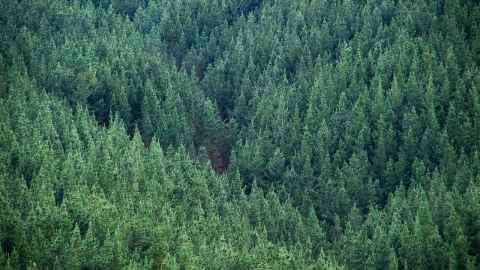Anne Salmond: Billion Trees policy being rorted
16 July 2019
Opinion: Natural forests take up 40 times more carbon than plantations, but most new planting under NZ’s Billion Trees policy is pine, writes Dame Anne Salmond.

Forestry commentators have noted that the industry is facing a perfect storm, with the trade war between the US and China affecting confidence, and trees infested with bark beetle in Russian and Scandinavian plantations being felled, processed and arriving in China by rail, undercutting New Zealand pine.
As I learned recently from forestry experts in Germany, these are not the only factors affecting the future of plantation forestry. Recent articles in Nature and Science strongly advocate growing trees as an effective way to tackle climate change, but point out that on average, natural forests sequester forty times more carbon than plantation forests.
According to the author of one of these studies, "There is a scandal here. To most people forest restoration means bringing back natural forests, but policy makers are calling vast monocultures 'forest restoration'. And worse, the advertised climate benefits are absent."
Indeed in New Zealand, the Emissions Trading Scheme currently pays much higher prices for carbon sequestered by pinus radiata plantations than by natural forests. For this reason, despite a promise that two thirds of the Billion Trees policy would be devoted to native trees, foresters are overwhelmingly using this fund to plant pine trees (88 percent) rather than natives (12 percent).
This makes little sense, because many other countries have their own ‘Billion Trees’ programmes, planting trees as a way of securing their carbon debts, and increasing the global supply of timber. China alone has planted millions of hectares, and like many other countries, is turning to ‘close to nature’ forestry to get better environmental outcomes.
This is timely, because some exotic species (including pinus radiata) are highly flammable, and monocultural plantations are susceptible to fire as well as pests in dry conditions. This is likely to include manuka grown as a monoculture.
At present, the science is pointing to ‘close to nature’ forestry with mixed species, little spraying and no clear felling as practised in northern Europe and elsewhere, as the most sustainable approach to securing supplies of timber as well as addressing climate change.
Given collapsing log prices, a scientific consensus that plantation forests should not be used to tackle climate change, and the catastrophic impacts of pine harvesting as seen in Tolaga Bay and elsewhere, it is crazy that Billion Trees is being used to plant pine trees, not natives. This policy is being rorted.
At present, New Zealand is heading in the opposite direction to many other countries, with almost no thought at all being given to ‘close to nature’ forestry as a viable alternative to exotic plantation forests. With unsaleable logs piling up in ports around the country, it's time to read the global signals, and change course
Professor Dame Anne Salmond is from the School of Māori and Pacific Studies in the Faculty of Arts. She leads the Te Awaroa: Voice of the River project and was 2013 New Zealander of the Year.
This article reflects the opinion of the author and not necessarily the views of the University of Auckland.
Used with permission from Newsroom Anne Salmond: Billion Trees policy being rorted on 16 July 2019.